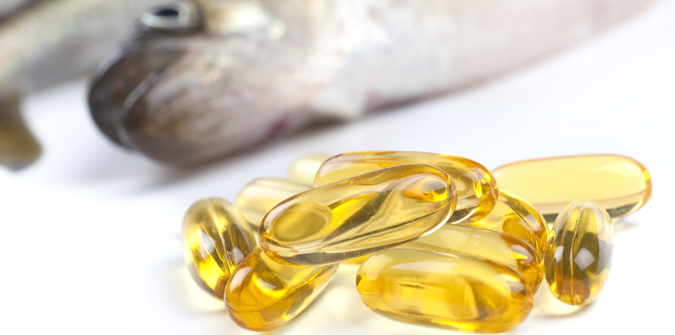USA Fish oil facts
Fish has long been known as brain food, but scientists have shown this is more than just a saying. A type of fat found in oil-rich fish actually makes up a significant component of our grey matter, and its supply is known to be critical when babies’ brains are forming. Fish oils are also a hot topic in nutrition research, and scientists are investigating a host of reasons why they may be beneficial for many areas of our bodies.
Fish oils (known scientifically as omega-3 oils) have been found to be particularly beneficial in preventing heart attacks and a type of stroke. They act in a variety of ways to lower triglycerides (a type of fat in the blood, similar to cholesterol), reduce the build up of “plaques” on the inside of the arteries, lower blood pressure a little, and help to keep the heart beating regularly.
Other areas in which scientists believe that fish oils may be beneficial include inflammatory conditions such as rheumatoid arthritis and the skin condition called psoriasis, as well as depression and menstrual pain.
Not all types of fish contain useful amounts of omega-3 oils – many varieties contain very little. For a healthy dose of omega-3s, look for salmon, mackerel, tuna (albacore), herring, trout, sardines, anchovies, halibut, and white fish. The canned varieties of these fish also contain the beneficial oils, with the exception of canned tuna. For healthy adults with no history of heart disease, the American Heart Association recommends eating fish, particularly the omega-3-rich types, at least two times per week. One serve is about 3.5 ounces of cooked fish (around the size of a pack of cards) or about ¾ cup of flaked fish.
Omega-3 oils can be tricky to obtain unless people do eat fish. There is a different form of omega-3 oil found in some plant foods including soybeans and soybean-based foods such as tofu, soybean oil, canola oil, English walnuts and walnut oil, linseeds and linseed oil. Only a small percentage of this type of oil is converted in the body to the beneficial type found in fish, but these foods are still worth including in your diet, particularly for people who do not eat fish. You can also look in the supermarket for special omega-3-containing eggs from chickens fed a specific diet. People who do not eat fish can take fish oil supplements – ask your physician or pharmacist for advice on these. And for those who are unable to use fish-based supplements, such as people who are vegan, there are also supplements made by microalgae.
Along with the benefits, eating fish does carry some risks. Fish can contain contaminants, such as a type of mercury. Because of this, the FDA recommends that women who may become pregnant, pregnant women, nursing mothers, and young children should follow the following guidelines:
- Do not eat shark, swordfish, king mackerel, or tilefish because they contain high levels of mercury.
- Eat up to 12 ounces (2 average meals) a week of a variety of fish and shellfish that are lower in mercury.
- Five of the most commonly eaten fish that are low in mercury are shrimp, canned light tuna, salmon, pollock, and catfish.
- Another commonly eaten fish, albacore (“white”) tuna has more mercury than canned light tuna. So, when choosing your two meals of fish and shellfish, you may eat up to 6 ounces (one average meal) of albacore tuna per week.
- Check local advisories about the safety of fish caught by family and friends in your local lakes, rivers, and coastal areas. If no advice is available, eat up to 6 ounces (one average meal) per week of fish you catch from local waters, but don’t consume any other fish during that week.
- Follow these same recommendations when feeding fish and shellfish to your young child, but serve smaller portions.
- For all other people, the advice is to try to vary the types of seafood you choose, which will help to minimize the risk from any environmental pollutants.
Here’s one last point: Try to cook your fish in a healthful way. You can avoid adding extra fat and calories by baking, steaming, or broiling it rather than frying.

